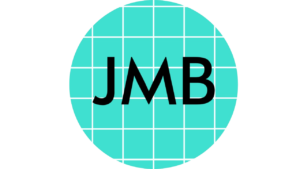Leadership in the Predictive Approach is the same in the Adaptive Approach?
what do you think?

Effective leadership plays a crucial role in the success of any project, whether it follows a predictive or adaptive management approach. Despite this commonality, nuances exist in how leadership is applied in each methodology.
In predictive management, leadership centers around meticulous project planning and stringent control. Leaders in this context are entrusted with possessing a clear and comprehensive vision of the project, demonstrating the ability to make well-informed, strategic decisions. Their role extends beyond mere guidance, incorporating a directive approach to ensure the project adheres to predefined plans and objectives.
Conversely, in agile management, leadership takes on a more collaborative and adaptable stance. The agile leader assumes the role of a facilitator, fostering teamwork and aiding the collective decision-making process within the team. The emphasis here is on quick adaptability to changes and continuous improvement, with the leader empowering the team to solve problems collectively.
The key differences between leadership in the predictive approach and the adaptive approach (Agile) across various dimensions, including emphasis, team structure, decision-making authority, focus, leadership style, and project team autonomy.
Aspect | Predictive Approach | Adaptive Approach (Agile) |
Emphasis | Planning and Control | Collaboration and Adaptability |
Team Structure | Hierarchical | Flat and Self-organizing |
Decision-Making Authority | Project Manager | Team |
Focus | Meeting Predetermined Goals and Objectives | Delivering Value through Continuous Improvement |
Leadership Style | Directive | Servant (Facilitator and Supportive) |
Project Team Autonomy | Limited | High (Self-managing) |
Examples of adaptive project management methods that require a servant leadership style include:
Adaptive project management methods, particularly those employing agile principles, demand a distinctive servant leadership style. Notable examples of adaptive methodologies that necessitate such a leadership approach include:
- Scrum: A prominent agile framework emphasizing collaboration, self-organization, and cross-functional teams. The Scrum Master, entrusted with facilitating the Scrum process, embodies the role of a servant leader. Their focus is on aiding the team in decision-making and mitigating impediments.
- Kanban: This agile method prioritizes visualizing work, limiting work in progress, and managing flow. The success of Kanban relies on the team’s autonomy in decision-making, with the leader assuming a facilitative and supportive role.
- Lean: A management philosophy centered on continuous improvement and waste elimination. Lean project management demands a servant leadership style, empowering the team to identify and eliminate inefficiencies.
- Extreme Programming (XP): An agile software development methodology emphasizing customer satisfaction, continuous delivery, and teamwork. XP requires a servant leadership style that prioritizes collaboration, communication, and fostering trust among team members.
Examples of predictive project management methods that require a directive leadership style include:
- Regulated Environment: Projects within highly regulated sectors, such as healthcare or finance, demand a directive leadership style to ensure unwavering compliance with stringent regulations and standards.
- Government Agencies or Non-Government Organizations: Initiatives entailing collaboration with government agencies or non-government organizations often necessitate a directive leadership style. This ensures alignment with the organization’s mission and objectives.
- Predictive Approach vs. Agile Iterative/Incremental: Predictive methods utilizing a waterfall approach specifically require a directive leadership style. This style is vital for maintaining adherence to the meticulously planned project progression.
- International, Regional, or Local Markets: Projects spanning various markets require a directive leadership style to ensure alignment with specific market needs and expectations, enhancing the project’s effectiveness.
- Developing Economy/Market: Projects in developing economies or markets thrive under a directive leadership style, essential for efficient resource utilization and adherence to planned project progression.
- Internal vs. External Customers: Projects involving internal customers necessitate a directive leadership style, guaranteeing alignment with organizational goals and objectives.
- Timing of Capital Infusion (Early or Late): Projects reliant on significant capital infusion require a directive leadership style to ensure efficient resource utilization and adherence to the planned project timeline.
- New Product Development: Initiatives focusing on new product development benefit from a directive leadership style to ensure adherence to project plans and meet customer needs and expectations.
- Tangible vs. Intangible End Product: Projects delivering tangible end products, such as construction projects, thrive under a directive leadership style. This ensures adherence to project plans and satisfaction of customer needs and expectations.
Conclusion:
In essence, while leadership remains a fundamental component in both project management methodologies, the approach diverges. Predictive management demands a focus on rigorous planning and control, whereas agile management places a premium on collaboration and adaptability, with the leader serving as a catalyst for cohesive problem-solving within the team.
Adaptive project management methods, exemplified by Scrum, Kanban, Lean, and Extreme Programming, thrive under a servant leadership style. This approach emphasizes collaboration, self-organization, and a commitment to continuous improvement.
Predictive project management methods demanding a directive leadership style encompass those operating in regulated environments, involving government agencies or non-government organizations, utilizing a waterfall approach, spanning different markets, operating in developing economies or markets, involving internal customers, requiring significant capital infusion, focusing on new product development, or delivering tangible end products.
About Jorge Marino Bolivar

Jorge Marino holds an Electrical Engineering Degree, with a specialization in Project Management obtained in Toronto, Canada, also has a diploma in culture and languages from Beijing Foreign Studies University, and he is a PMP certified by PMI and a member of the PMI Northern Alberta Chapter.
Jorge has navigated the diverse landscapes of project management and business consulting across an array of industries internationally (Canada, Venezuela, China, Mexico, and Argentina). His journey spans the realms of energy, education, technology, manufacturing, and construction, where he orchestrated projects that blend innovation with strategic acumen.
As a seasoned project manager and astute business consultant, Jorge has honed his skills to transform visions into tangible success stories, leaving an indelible mark on each industry he has touched.
Should you have any inquiries, I am eager to assist you. Feel free to post your questions or reviews in the comment section below. I assure you prompt attention to all queries.
Wishing you success in your PMP certification!
